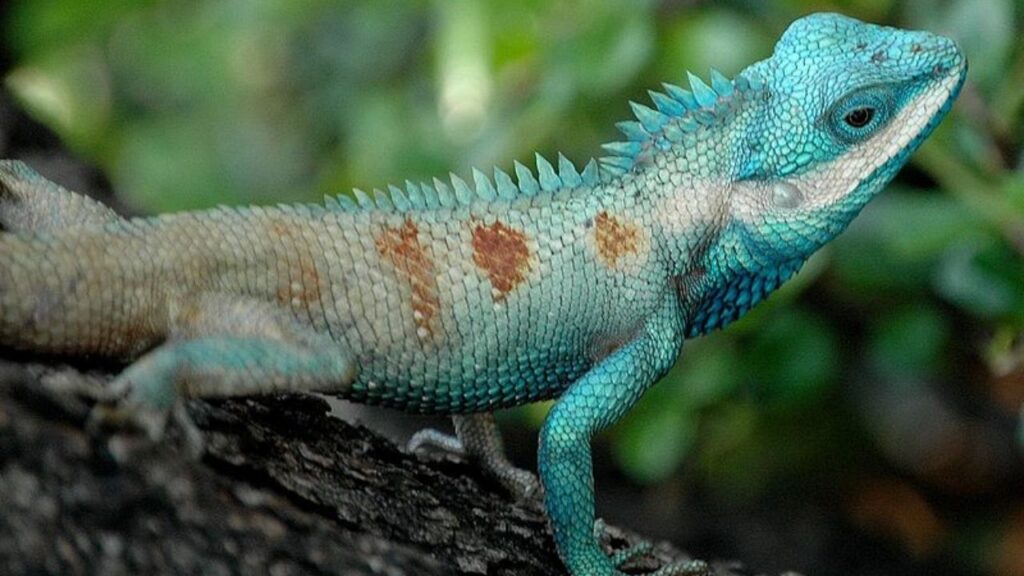Do Lizards Attack Humans? Lizards generally do not attack humans, as they are typically non-aggressive and prefer to flee when threatened.
Lizards are fascinating and diverse creatures, often spotted in gardens, forests, and deserts around the world.
From tiny geckos to the mighty Komodo dragon, these reptiles come in a wide range of shapes and sizes.
Despite their wide distribution and the fact that many people encounter them, there is often a question that arises: Do lizards attack humans?
Many people, especially those who are not familiar with reptiles, may assume that lizards are dangerous or aggressive creatures, but the reality is far from that.
In this article, we’ll explore the truth about lizards and their interactions with humans. [Do Lizards Attack Humans?]
We’ll take a deep dive into their behavior, which species are more likely to bite or show aggression, and how you can avoid provoking them.
Ultimately, this post will provide clarity on the question, “Do lizards attack humans?”
Contents
What Are Lizards?
General Characteristics
Lizards are members of the reptile class and are part of the order Squamata. They are cold-blooded creatures, meaning they depend on external temperatures to regulate their body heat.
Lizards can be found across a variety of environments, from deserts to tropical rainforests, and in nearly every corner of the globe, except Antarctica.
Lizards are recognized by their scaly skin, long tails, and most commonly, four legs. However, some species of lizards, such as snakes, have evolved to lose their limbs over time.
They vary greatly in size, with some species measuring just a few centimeters, while others, like the Komodo dragon, can grow to be several meters long.
Lizards come in an array of colors and patterns, which help them blend into their environment, evade predators, and attract mates. [Do Lizards Attack Humans?]
Many lizards also have the ability to regrow their tails if lost, which is another evolutionary advantage in escaping predators.
Common Types of Lizards
There are over 5,000 species of lizards, and they can be grouped into several broad categories based on their characteristics and habitats. Some of the most commonly known types of lizards include:
- Geckos: Small, nocturnal lizards that can be found in a variety of habitats around the world. They are often recognized by their unique ability to climb walls and their distinctive vocalizations.
- Iguanas: These large lizards are commonly kept as pets and are native to Central and South America. They can grow up to 6 feet in length and are herbivores.
- Monitors: A family of lizards that includes the Nile monitor, the water monitor, and the Komodo dragon. Monitor lizards are known for their intelligence and agility. [Do Lizards Attack Humans?]
- Chameleons: Famous for their color-changing abilities and prehensile tails, chameleons are found primarily in Africa and Madagascar. They can change color to match their environment or signal emotions.
Lizard Behavior and Temperament
Are Lizards Aggressive?
Lizards, by nature, are not aggressive creatures. They are typically solitary animals and, depending on the species, may be territorial, but they rarely engage in fights unless absolutely necessary. Lizards are generally shy and prefer to avoid confrontation.
When faced with a potential threat, most lizards will attempt to flee rather than fight. They rely heavily on camouflage and stealth to avoid being seen by predators, which makes them well-equipped for self-preservation. [Do Lizards Attack Humans?]
However, there are always exceptions to this behavior. While aggression is rare in most species, some lizards may exhibit aggressive tendencies, particularly if they are cornered or feel threatened.
Larger species like monitor lizards and iguanas may become more defensive if they perceive humans or other animals as a threat. In these situations, they may bite or use other means of defense.
Why Lizards Avoid Conflict
In the wild, it’s beneficial for most lizards to avoid confrontation with other animals, including humans. Many lizards are not physically capable of defending themselves against larger predators.
Their primary defense mechanisms include fleeing to safety, hiding, or using their environment to remain undetected. [Do Lizards Attack Humans?]
For example, species like the gecko or chameleon rely on their ability to blend in with their surroundings. Even larger lizards such as the iguana or the water monitor would rather run away or seek shelter when faced with danger than engage in combat.
This aversion to conflict is an evolutionary trait that helps ensure survival. Lizards that are overly aggressive may end up injured or killed in encounters with larger animals or humans. Thus, most lizards’ first instinct is to run or hide rather than stand and fight.

Can Lizards Attack Humans?
Defensive Behavior
Lizards are not naturally aggressive toward humans. However, like any animal, they will defend themselves if they feel threatened.
If a lizard is cornered, handled roughly, or trapped, it may bite or scratch in self-defense. In most cases, these bites are not harmful and will only cause minor pain or a small puncture wound.
It’s important to understand that these bites are the result of the lizard feeling endangered and not a sign of inherent aggression toward humans. [Do Lizards Attack Humans?]
Some species, such as the green iguana, may become particularly defensive when they feel that their territory or personal space is being encroached upon. While their bites can be painful, they are generally not life-threatening.
Exceptions to the Rule
As mentioned earlier, most lizards avoid attacking humans, but there are some exceptions, especially among the larger species. The Komodo dragon, for example, is one of the few lizards that can pose a serious risk to humans.
This massive reptile, which can weigh up to 200 pounds and grow over 10 feet long, has powerful jaws capable of delivering dangerous bites.
Komodo dragons are known to attack their prey, including large mammals, and while human attacks are rare, they have been recorded in the wild.
Another example of a potentially dangerous lizard is the monitor lizard. While most monitor lizards are not aggressive unless provoked, species like the Nile monitor and the Asian water monitor are capable of delivering painful bites.
If threatened, these lizards can become aggressive and defend themselves with their sharp teeth and claws. [Do Lizards Attack Humans?]
Types of Lizards That May Bite or Show Aggression
Species Likely to Bite
Certain species of lizards are more likely to bite if they feel threatened or provoked. These species include:
- Iguanas: While iguanas are commonly kept as pets, they can become aggressive, especially if they feel stressed or threatened. They are known to bite if mishandled, and their bites can be painful.
- Monitor Lizards: Monitor lizards, particularly the larger species like the savannah monitor and Nile monitor, can be quite aggressive if they feel cornered. Their powerful jaws and sharp claws make them capable of inflicting serious bites.
- Bearded Dragons: Although these pet lizards are generally calm and docile, they may bite in self-defense if they feel threatened or startled.
When Bites Occur
Bites from these species typically happen when the lizard feels trapped or frightened. For example, an iguana might bite if it’s handled roughly or surprised.
Monitor lizards and bearded dragons may also bite if they feel threatened or if they are startled by sudden movements. [Do Lizards Attack Humans?]
These bites, while uncomfortable, are typically not dangerous. However, they should still be treated with care. Cleaning the bite area and seeking medical attention is important if there is any risk of infection.
How to Avoid Provoking Lizards
Handling Wild Lizards
If you encounter a wild lizard, it’s best to avoid trying to touch or capture it. Lizards are not domesticated creatures and can become stressed or frightened by human interaction. To ensure you don’t provoke the lizard:
- Respect Their Space: Give the lizard plenty of room to move around and avoid cornering it.
- Move Slowly: If you need to pass by or approach a lizard, do so slowly and gently.
- Avoid Sudden Movements: Quick movements or loud noises can startle a lizard, causing it to become defensive. [Do Lizards Attack Humans?]
Dealing with Pet Lizards
If you keep a pet lizard, it’s important to understand the species’ temperament and specific handling requirements. Some lizards are more likely to bite than others, and it’s crucial to learn how to handle them safely.
- Handle With Care: Always approach your pet lizard gently and avoid grabbing them by the tail, as this could cause them stress.
- Create a Comfortable Environment: Ensure your pet lizard has enough space and a safe environment where it feels secure.
- Don’t Startle Your Lizard: Sudden movements or loud noises can stress out a pet lizard, which could cause it to act defensively.
Conclusion: Do Lizards Attack Humans?
Lizards, in general, are not dangerous to humans. Most species are non-aggressive and would prefer to flee from danger rather than fight. [Do Lizards Attack Humans?]
While bites may occur when a lizard feels threatened or cornered, they are rare and generally harmless. Larger species like monitor lizards and Komodo dragons are exceptions to this rule, as they may pose a risk in certain situations.
By understanding the behavior of lizards and respecting their space, you can ensure that your encounters with these fascinating creatures remain safe and peaceful.
FAQs
Do pet lizards ever attack their owners?
Pet lizards can bite if they feel threatened or mishandled. It’s important to handle them gently and understand their species’ needs.
What should you do if a lizard bites you?
Clean the wound thoroughly with soap and water, apply antiseptic, and seek medical attention if there is significant swelling or infection.
Are all lizards harmless to humans?
Most lizards are harmless, but certain species, such as Komodo dragons, monitor lizards, and large iguanas, can pose a risk if provoked.
What is the largest lizard species that can be dangerous to humans?
The Komodo dragon is the largest lizard species capable of posing a significant threat to humans. [Do Lizards Attack Humans?]
Can lizards cause serious harm with their bites?
While lizard bites are usually not dangerous, larger species can inflict painful wounds, and medical attention may be needed if the bite becomes infected.

Hello, I am Rosa Ellis, a mother of two and a wildlife blogger. I grew up in New York City, but I love exploring forests. I’ve traveled to places like Yellowstone National Park and the Amazon Rainforest to see animals up close. I know a lot about animal behavior and which animals can be dangerous to humans. Thanks for visiting my blog!

